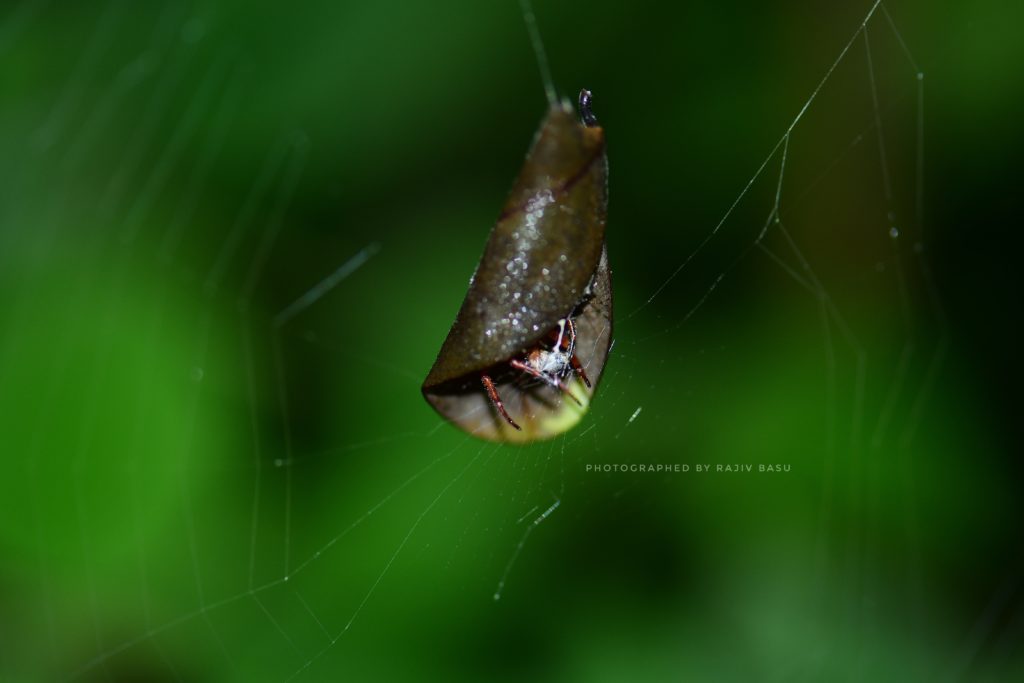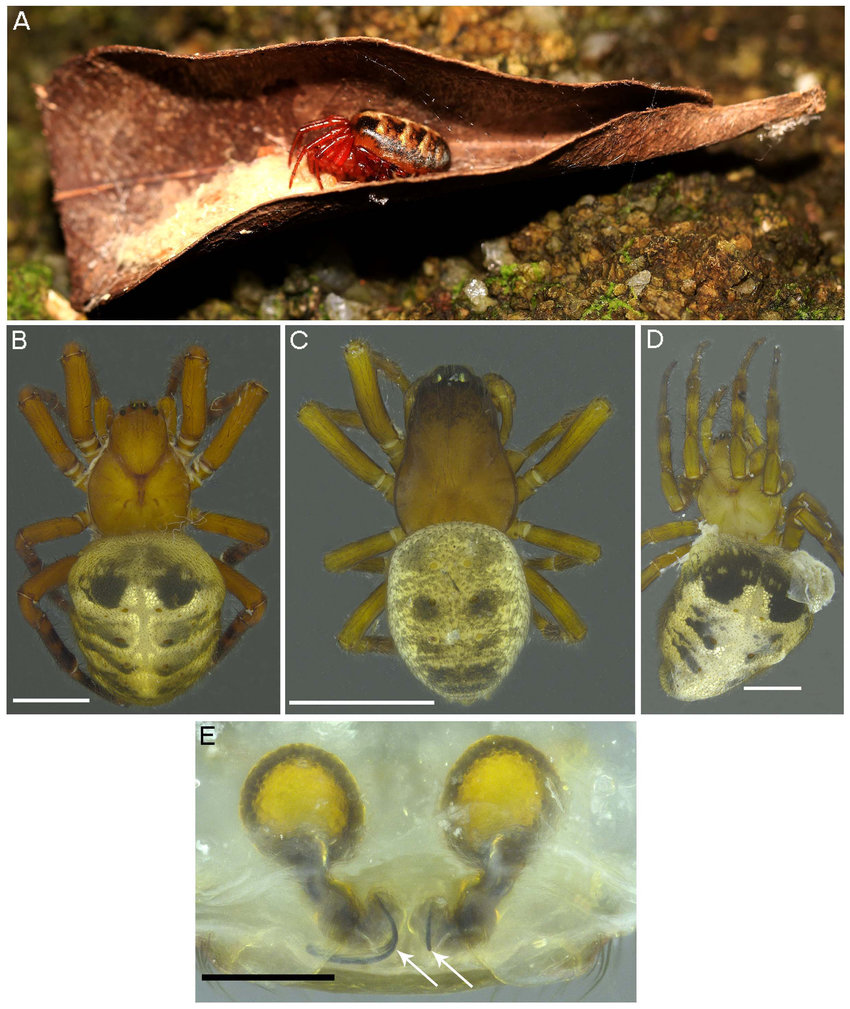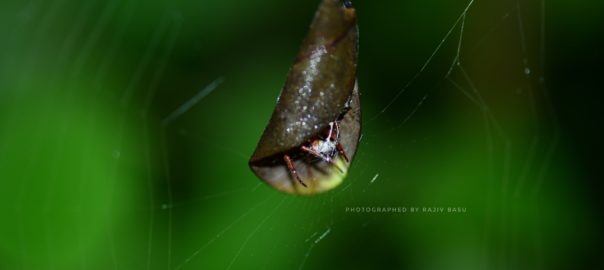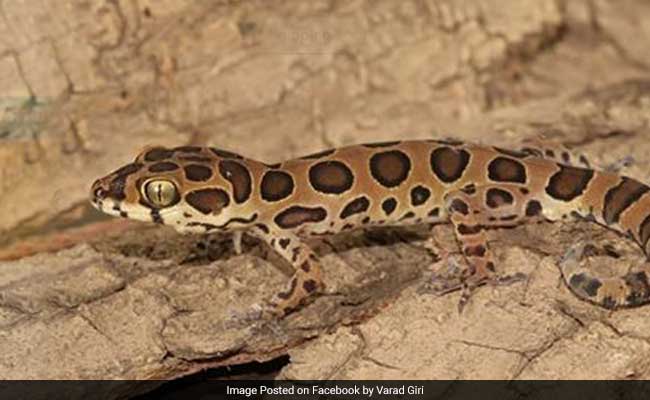Quick Notes
- Wildlife enthusiast Rajiv Basu clicks photo of a spider rarely seen in Agumbe forests and believes it is the leaf curling spider
- The last time the spider was officially clicked was in 1928 by W R Sheriff
- A research paper published in June 2018 says the spider that Sheriff clicked could have been misidentified and it could be a different type of leaf curling spider
Rajiv Basu, a wildlife enthusiast was on a 2 day trip to Agumbe forests in Western Ghats when he came across a leaf stuck on a web. Rajv ignored it at first, thinking the leaf might have fallen from the foliage above and had got stuck in the web, when he noticed tiny little legs coming out of the leaf. Rajiv quickly clicked a picture of what he thought was the Leaf Curling Spider which has been rarely photographed in India.
“We were a small team of 4 people and decided on taking a dense trail from KCRE, Agumbe on 23rd July morning in search of endemic Malabar Pit Viper,” recalls Rajiv, an IT professional from Bangalore and a passionate wildlife lover who enjoys macro and wildlife photography.
“The track had been dense infested with leech. Even though we could not find Pit Viper, we were happy with the other life forms, such as the dancing frog, longhorn orb weaver, etc.”
Read More: Spider Discovered in Western Ghats Gets Name Inspired from Harry Potter Books
“While we were travelling, we came across this leaf like thing stuck on a web. Initially, I ignored as I thought it is just a leaf from behind. With curiosity when I headed to the opposite side, I could see 3 legs coming out of the leaf. I waited and observed the behavior and could manage to take the shot I have shared.”

Unfortunately Rajiv could not take more shots or see the complete spider as the place was in the middle of dense forest with thick bushes and leeches trying to climb on his body.
The Elusive Spider
As its name suggests the leaf curling spider is an unusual member of the Arachnid family that uses a leaf to protsect itself and its eggs.
According to this website, Leaf-Curling spiders belong to the Araneidae order of orb-weavers. Their web is constructed as three-quarters of a circle, with the leaf suspended in the missing section at the top.
The leaf is hauled from the ground by the spider using a silken pulley system and more silk is used to ‘sew’ it together. Leaf-Curlers preferentially choose Eucalyptus leaves, but other plant leaves are sometimes used, or even snail shells!

The spiders are found in Australia, but one species belonging to the genus Phonognatha, the Phonognatha vicitra was discovered by W. R. Sherriffs back in 1928 in India.
Rajiv thinks it is the same spider species that he was able to photograph and it could be that the spider was photographed in India again after at least 90 years.
Read More: Conversation with a Gooty Tarantula
The Debate
In 1928 W. R. Sherriff described as Phonognatha vicitra a spider that was found in Kodagu district of Karnataka a coffee estate. He photographed this spider and till date it has been placed under the genus Phonognatha. However, in June 2018 according to a paper published in Zootaxa by researchers Pradeep Sankaran and P Sebastian who collected specimen of the same spider from the same estate, the morphology of the spider and its habit of hiding inside a leaf is similar to another species the South East Asian orb-weaving spider genus Acusilas Simon pictured below.

The researchers believe that Sheriff might have misplaced his spider in the wrong genus but their theory is yet to be given scientific validation and is under review.
In 2011, as per the website Daily Critter another photographer Pavan Srinath chanced upon this spider in a small town called Kambalakkad in Wayanad, Kerala. He also believes the spider he clicked was Phonognatha vicitra .
In 2016, there were also reports of the Taj Mahal gardens being infested by these spiders. Read here.
Our View
As Phonognatha vicitra has been very rarely studied in detail unlike its Australian cousins, it will be difficult to say with certainty that the photo that Rajiv clicked was indeed that particular species. It would be great if any spider expert reading this post can shed some light on this species. One expert Manju Siliwal whom we sent the photo to, believes that it could be a spider from the Araneidae family but cannot be certain as the photo does not show the complete spider.
For now, we are happy to know that such critters with fascinating behaviour exist in India’s forests and Rajiv was kind enough to share his find with our readers.
If you have an opinion on the identity of this spider, you can leave a comment below or send a mail to contact@indiasendangered.com
Read More: A Spider that can stay Underwater for 14 minutes






One thought on “Is This the Rarely Photographed Leaf Curling Spider?”